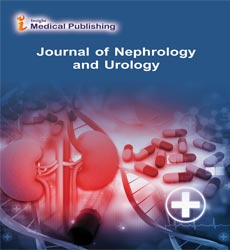Association between Ureteric Stent Dwell Time and Urinary Tract Infections
Abstract
Background - Ureteric stone obstruction commonly presents to the Emergency Department, with definitive management often involving ureterostomy and laser lithotripsy. Insertion of a ureteric stent prior to staged lithotripsy is commonly performed in the public healthcare system. Foreign bodies in the urinary tract are also known to increase urinary tract infection (UTI) risk. This study aims to evaluate the association between stent dwell time and UTI prior to lithotripsy. Methods - The medical records of all patients who were treated for ureteric stones with initial stent insertion and staged lithotripsy, from 1 January 2018 to 30 June 2019 at a single tertiary center, by eight urologists were retrospectively reviewed. Demographic features, disease factors and urine culture data were collected and analyzed. Results - Of the 172 patients (median age 56.7 years) identified, one third had a positive pre-stent urine culture. Twenty-three percent had a positive pre-lithotripsy urine culture with 38% of females compared with 15% of males having a positive culture (p=0.001). Only 4.3% of patients had a pre-lithotripsy UTI when the stent dwell time was under one month compared with 26.2% when ureteric stents were in situ longer than one month (p=0.021). The correlation between ureteric stent dwell time and pre-lithotripsy UTI was not linear. Patient co-morbidities, stone size, burden and location were not statistically correlated to pre-lithotripsy UTI. Conclusion - In delayed two-staged surgical management of acute urolithiasis, optimal ureteric stent dwell time is below one month to reduce pre-lithotripsy UTI. Female gender is an independent risk factor for pre-lithotripsy UTI.
Open Access Journals
- Aquaculture & Veterinary Science
- Chemistry & Chemical Sciences
- Clinical Sciences
- Engineering
- General Science
- Genetics & Molecular Biology
- Health Care & Nursing
- Immunology & Microbiology
- Materials Science
- Mathematics & Physics
- Medical Sciences
- Neurology & Psychiatry
- Oncology & Cancer Science
- Pharmaceutical Sciences
